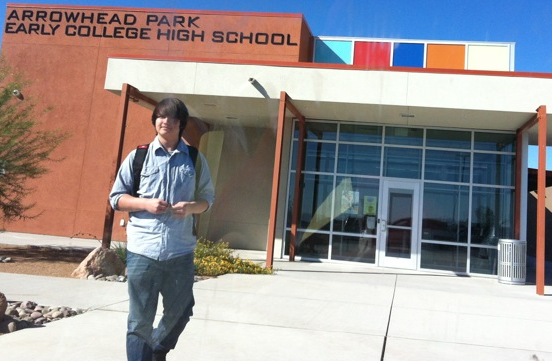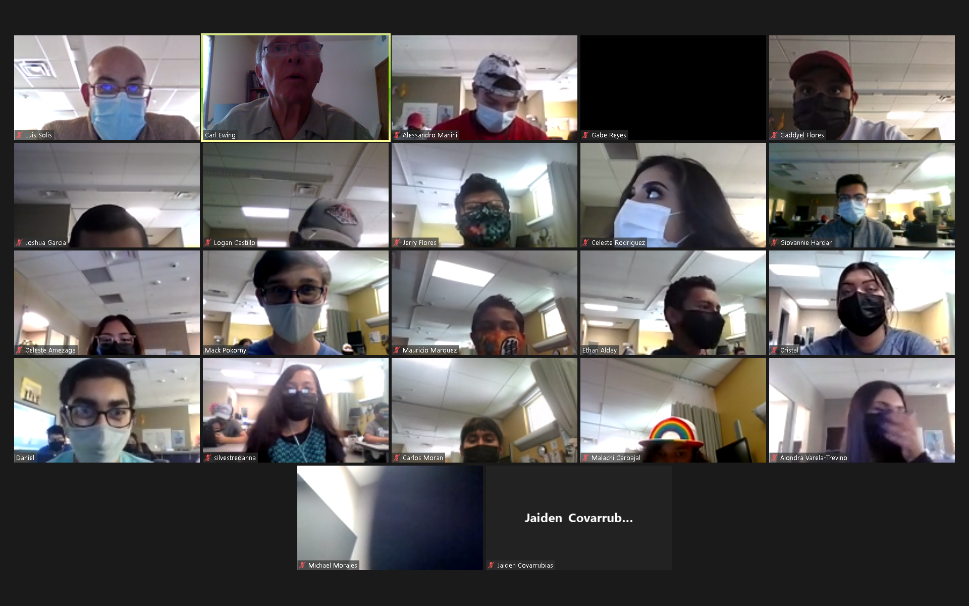Carl Ewing continues to seek out opportunities to share Transformative Leadership in his community. In January we published the article Transformative Leadership at Doña Ana Communities United in which he explained how he shared Transformative Leadership with the staff of DACU and then with the wider community. In this article, Carl shares his initial experiences in including Transformative Leadership in classes in a high school and community college.
TRANSFORMATIVE LEADERSHIP IN A SCHOOL SETTING: Article by Carl Ewing

Background
When I moved to Las Cruces 5 years ago, I knew that I wanted to work with young people, especially those from Hispanic backgrounds. I approached the Community College that welcomed me with open arms, asking me to mentor new students in architecture. Two years ago, the faculty chair asked me if I would be interested in teaching a class that introduced new students to the professions of architecture and engineering. I accepted and developed a class that would give students an overview of all the varied facets of these careers. I taught this class for a couple of semesters with great results. Then, I got a call from the Dean, asking me if I would do two courses, one at the community college and another at an early college STEM high school. While discussing this with the Dean, I suggested to him that we include Transformative Leadership in the courses. He said that this is exactly what is needed in education and that he would support it. He purchased the book to read.
I am in the middle of my first semester teaching these courses. Since I have classes on Tuesdays and Thursdays, I decided to focus on the introduction to architecture and engineering on Tuesdays, and Transformative Leadership on Thursdays. This works quite well so far. I find a lot of interest in the Transformative Leadership material and am getting good assignments back from the students, who are 95% Mexican or children of Mexican immigrants.
Experience with the Students
The Transformative Leadership classes are held virtually once a week. The class at the community college is asynchronous (pre-recorded lecture sessions, including slides and paragraphs from the book) with a weekly virtual meeting to interact with the students. This class has 10 students. The dean suggested that I not require the book since many of the students are from low-income situations. However, the library has a number of copies and many of the students have purchased the book for themselves.

The class at the high school is held synchronously online. This class has 20 students. I give the lecture on the topic of the week based on Transformative Leadership: Developing the Hidden Dimension and then the students meet in four groups to discuss the questions I have posed regarding the topic. They then choose a person to report back to the larger group. Again, the students are not required to buy the book but have access to it through the library.
In both institutions, I am using the learning cycle to continuously improve the lectures and classes. After my experience with this semester’s classes, I will be making improvements to my presentations, based on the results of my reflection. I may incorporate more ideas from the book, Transformative Leadership for Youth in the high school class.
Reaction of the Students
So far, I am pleased with the responses expressed by the students. In both classes, they have responded enthusiastically, and have commented that the course makes them think about topics about which they have not reflected previously.
A couple of examples of student responses are:
What does the process of disintegration look like in families, neighborhoods, schools, communities, and the world? Give examples based on your own experience and what you have seen or heard on the news.
“The process of disintegration can be seen in families, neighborhoods, schools, communities, as well as in the world through hate crimes due to racism or even through the homeless and their struggles with money. Some examples of disintegration that I’ve experienced myself include racism. Being a person of color, I often see many people discriminate against me and instead see me as the many stereotypes that come with being a Hispanic person. Being called slurs or being asked if I have stolen something from a store is a very clear example of the process of disintegration as they cause people to not work together and still use outdated thinking causing the very root of this problem…”
What do you think is the relationship between personal transformation and social transformation?
“Personal transformation occurs when an individual develops specific qualities and abilities. Therefore, it focuses on the growth of an individual while social transformation occurs when an individual focuses on helping develop a better society. However, ultimately, they both help an individual grow, due to the fact that they either grow strong qualities for themselves through self-improvement or through the improvement of themselves as well as a society.”
